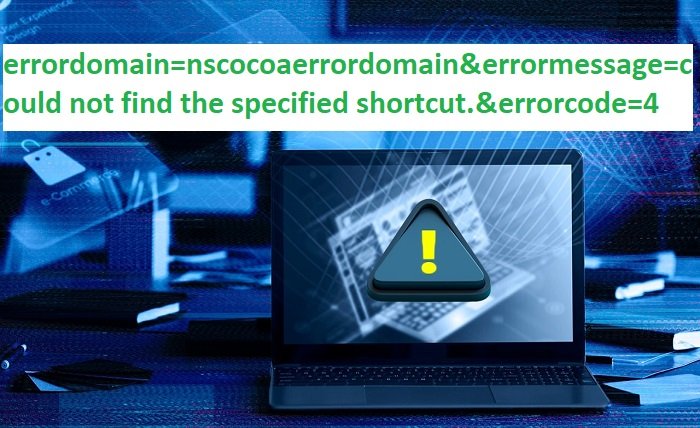Introduction
In the world of computing, encountering errors is a common experience. While many of these errors are minor and easily resolved, some can be more severe and require immediate attention. One such error is the “fatal error.” This type of error can cause significant disruptions and even halt the functionality of a system or application. In this comprehensive guide, we will explore what fatal errors are, their causes, how to resolve them, and preventative measures you can take to avoid them. By the end of this article, you will have a thorough understanding of fatal errors and how to handle them effectively.
What is a Fatal Error?
A fatal error is a type of critical error that leads to the abrupt termination of a program or system process. Unlike minor errors, which may allow the program to continue running, a fatal error forces the system to stop the operation immediately. This can result in the loss of unsaved data and potentially cause further issues if not addressed promptly.
Common Causes of Fatal Errors
Software Bugs
Software bugs are one of the primary causes of fatal errors. These are flaws in the code that can lead to unexpected behavior, causing the program to crash.
Hardware Failures
Hardware failures, such as a malfunctioning hard drive or overheating CPU, can also trigger fatal errors. When the hardware is unable to perform its tasks, the system may shut down to prevent further damage.
Memory Issues
Memory-related problems, including insufficient memory allocation or memory leaks, can result in fatal errors. When a program cannot access the required memory, it may crash.
Incompatible Software
Running incompatible software or using outdated drivers can lead to fatal errors. Compatibility issues often arise when new software updates are released, but the existing hardware or operating system is not updated accordingly.
Corrupted Files
Corrupted files, whether due to a virus, improper shutdown, or bad sectors on a hard drive, can cause fatal errors. When the system tries to access these corrupted files, it may encounter problems that lead to a crash.
Symptoms of a Fatal Error
Recognizing the symptoms of a fatal error is crucial for prompt resolution. Some common signs include:
- Blue Screen of Death (BSOD) on Windows systems
- Sudden system reboots
- Application crashes with error messages
- System freezes or hangs
- Error logs indicating a critical failure
How to Diagnose Fatal Errors
Check Error Messages
Error messages often provide valuable clues about the nature of the fatal error. Pay close attention to these messages and note any specific error codes or descriptions.
Use Diagnostic Tools
Various diagnostic tools, such as event viewers and system monitors, can help identify the root cause of a fatal error. These tools can analyze system logs and provide insights into what went wrong.
Reproduce the Error
If possible, try to reproduce the error under controlled conditions. This can help narrow down the potential causes and make it easier to identify the specific issue.
Resolving Fatal Errors
Software Updates
Ensure that all software, including the operating system, drivers, and applications, are up to date. Updates often contain bug fixes and improvements that can resolve fatal errors.
Hardware Maintenance
Regularly check and maintain your hardware components. This includes cleaning dust from inside the computer, ensuring proper ventilation, and replacing any faulty hardware.
Memory Management
Monitor and manage your system’s memory usage. Close unnecessary applications and consider upgrading your RAM if you frequently encounter memory-related fatal errors.
Reinstalling Software
If a specific application is causing the fatal error, try reinstalling it. This can resolve issues related to corrupted files or incorrect installation.
System Restore
Use the system restore feature to revert your system to a previous state when it was functioning correctly. This can help resolve fatal errors caused by recent changes to the system.
Preventing Fatal Errors
Regular Backups
Regularly back up your important data to prevent data loss in case of a fatal error. Use external drives or cloud storage for backups.
Antivirus Protection
Install and maintain reliable antivirus software to protect your system from malware and viruses that can cause fatal errors.
Avoid Overloading the System
Avoid running too many applications simultaneously, as this can overload the system and lead to fatal errors. Keep your system resources in check.
Safe Software Practices
Only install software from trusted sources and avoid downloading pirated or cracked software. These can contain malware that triggers fatal errors.
Regular Maintenance
Perform regular system maintenance tasks, such as disk cleanup and defragmentation, to keep your system running smoothly and prevent fatal errors.
Fatal Errors in Different Operating Systems
Windows
Windows systems often display a Blue Screen of Death (BSOD) when encountering a fatal error. The BSOD provides an error code that can help diagnose the issue.
macOS
On macOS, fatal errors typically result in a “kernel panic” screen, which prompts the user to restart the computer. The error message provides details about the cause.
Linux
Linux systems display a “kernel panic” message similar to macOS. This indicates a critical error in the kernel, requiring a system reboot.
Famous Fatal Errors in History
Windows 98 Demo Crash
During the launch of Windows 98, a fatal error occurred during a live demonstration, causing the system to crash. This incident highlighted the importance of thorough testing before public releases.
Apple’s iPhone Demo Fail
In 2007, during the first iPhone presentation, Steve Jobs encountered a fatal error, leading to a temporary halt in the demonstration. This showcased the challenges even tech giants face with fatal errors.
Fatal Errors in Gaming
Game Crashes
Gamers often encounter fatal errors that cause games to crash. These errors can result from bugs, incompatible hardware, or corrupted game files.
Error Codes in Gaming Consoles
Gaming consoles, like PlayStation and Xbox, display specific error codes when fatal errors occur. These codes help users and support teams diagnose and resolve issues.
Future of Error Management
Artificial Intelligence
AI and machine learning are being used to predict and prevent fatal errors by analyzing system behavior and identifying potential issues before they cause crashes.
Improved Software Development
Advancements in software development practices, such as continuous integration and automated testing, are helping reduce the occurrence of fatal errors.
Conclusion
Fatal errors can be daunting, but with the right knowledge and tools, they can be managed effectively. By understanding the causes, symptoms, and solutions for fatal errors, you can minimize their impact and keep your system running smoothly. Regular maintenance, software updates, and safe computing practices are essential in preventing these critical errors. Stay vigilant and proactive, and you’ll be well-equipped to handle any fatal error that comes your way.
FAQs
1. What is a fatal error?
A fatal error is a critical error that causes a program or system process to terminate abruptly, often leading to data loss and requiring immediate attention.
2. How can I prevent fatal errors?
Preventing fatal errors involves regular system maintenance, keeping software up to date, using reliable antivirus protection, and avoiding system overload.
3. What should I do if I encounter a fatal error?
If you encounter a fatal error, check for error messages, use diagnostic tools, and try to reproduce the error. Updating software, performing hardware maintenance, and reinstalling problematic applications can also help resolve the issue.
4. Why do fatal errors occur in games?
Fatal errors in games can occur due to software bugs, incompatible hardware, or corrupted game files. Ensuring your system meets the game’s requirements and keeping your drivers up to date can help prevent these errors.
5. Can fatal errors cause permanent damage to my system?
While fatal errors themselves do not typically cause permanent damage, they can indicate underlying issues that may lead to hardware failure if not addressed. Regular maintenance and prompt resolution of errors are crucial to preventing long-term damage.





